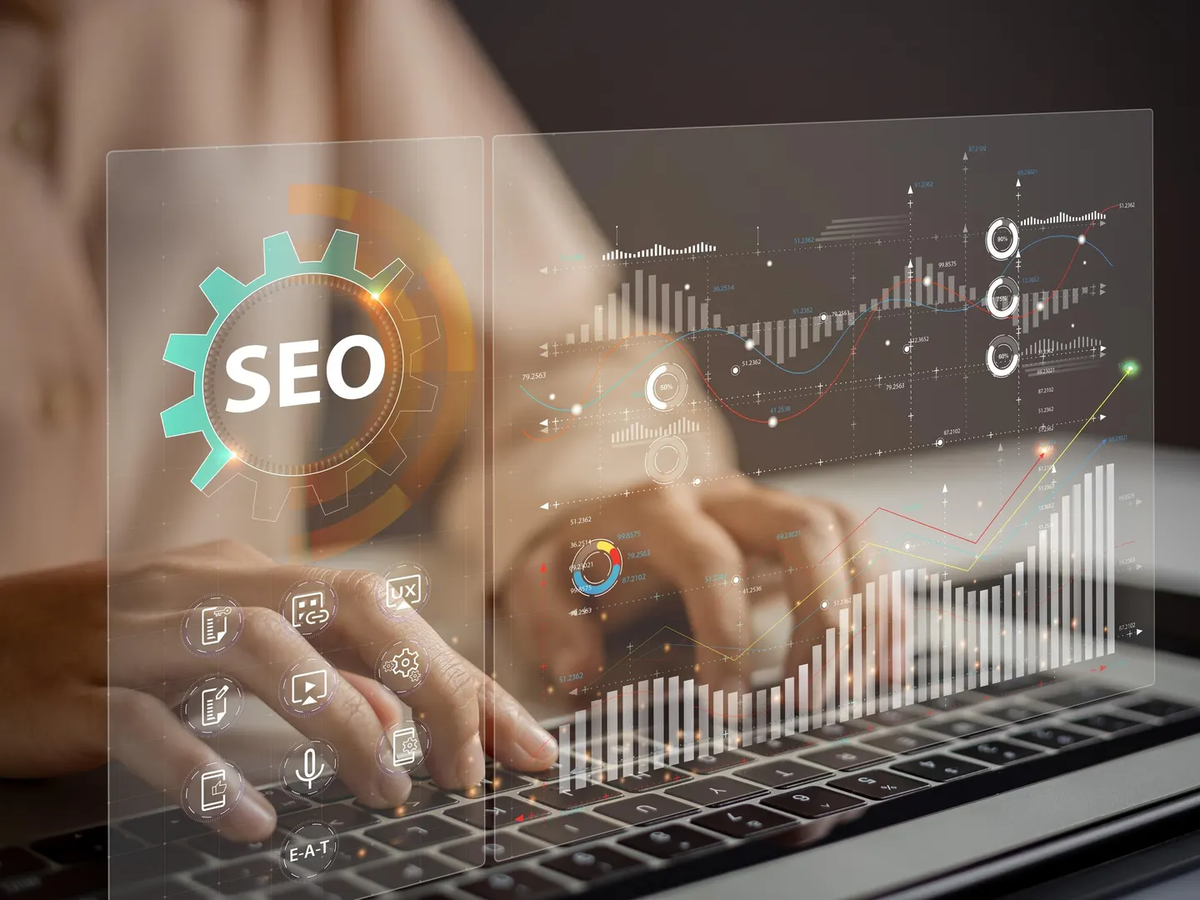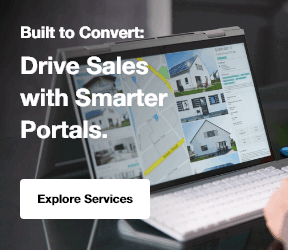In an era where algorithms evolve at breakneck speed, understanding the Benefits of SEO is more critical than ever. As businesses debate “quick wins” versus lasting impact, the importance of SEO shines through: organic search remains the top source of website traffic, outpacing social and paid channels combined. For e-commerce businesses, investing in SEO services for ecommerce websites ensures your online store ranks higher, attracts more traffic, and converts visitors into loyal customers. But how important is SEO truly in 2025? In this post, we’ll unpack why investing in best-in-class SEO beats one-off tactics every time, and preview a clear, 15-point listicle to chart your path forward. By leveraging the advantages of SEO, businesses can achieve sustainable growth and visibility.
1. SEO Increases Brand Visibility
SEO Increases Brand Visibility
Brand visibility makes the difference between thriving and fading into obscurity, and nothing boosts visibility like a robust SEO strategy. When your site ranks prominently for high-value keywords, you’re effectively placing your brand logo in front of prospects at the very moment they’re seeking solutions you offer. Partnering with an SEO firm ensures you are targeting the right keywords and reaching your audience effectively, driving organic traffic that increases your brand's visibility. The benefits of SEO marketing lie in this ability to position your brand precisely where it matters most.
Rather than interrupting a user’s journey with intrusive advertisement examples, SEO aligns your content with user intent, earning you prime real estate in search results organically. This organic presence carries an implicit endorsement: when searchers see your domain atop the page without the “Ad” badge, they assume you’re the most relevant and trusted option. The seo benefits are clear—organic visibility fosters trust and drives engagement without additional costs.
Beyond individual keyword wins, SEO strengthens your overall digital footprint. Optimized title tags and meta descriptions ensure your listing stands out visually, while schema markup can generate rich snippets, star ratings, FAQs, and event details that command the eye and drive click-through rates higher than plain links. These enhancements don’t require additional ad spend; they’re by-products of sound on-page optimization. Over time, users grow accustomed to seeing your brand name whenever they search for your industry’s core topics. This repetition fosters brand recall, so that even if they don’t click right away, they remember you later, increasing the likelihood of direct visits and b
2. SEO Improves Credibility

Credibility is earned, not bought, and SEO is the engine that earns it at scale. While some organizations rely on outsourced SEO services provider for expertise, organic authority speaks louder. When your website consistently appears in the top three organic results for competitive search terms, it carries an unspoken seal of approval from the search engine itself. Users trust that Google and Bing have vetted and validated the authority of those top results, so they click with confidence. That trust extends beyond a single search: once your brand achieves first-page status for a key topic, every subsequent visit reinforces your expert reputation. This is one of the key seo advantages for businesses aiming to build lasting trust.
But credibility in SEO isn’t only about positions; it’s also built through content quality and technical excellence. Crafting in-depth, accurate, and well-structured content aligns with Google’s E-A-T (Expertise, Authoritativeness, Trustworthiness) guidelines. Pages that comprehensively address user questions backed by data, citations, and clear author credentials signal expertise. Incorporating on-page elements like author bios, publication dates, and outbound links to reputable sources further strengthens trust. Over time, users associate your site with reliability, driving repeat visits, lower bounce rates, and higher engagement metrics that feed back into stronger rankings. Brand Strategy services for small business can help enhance this credibility by ensuring content consistently resonates with the target audience and aligns with brand values. The benefits seo offers in credibility-building are unmatched by paid channels.
Technical SEO reinforces credibility behind the scenes. A secure HTTPS connection, fast page loads, mobile-friendly design, and accessible structure all contribute to a seamless user experience, and nothing undermines trust faster than a broken or sluggish site. Schema markup adds another layer, enabling search engines to display review stars, event details, and FAQ accordions, giving users a richer, more informative result before they even click. Every element from clean URL structures to proper canonical tags demonstrates professionalism and care, cementing your site’s reputation in the eyes of both algorithms and visitors. These seo benefits for business ensure a polished and trustworthy digital presence.
3. Increased Brand Awareness
Brand awareness is about being recognized and remembered, and SEO extends your reach far beyond direct ad buys. Every keyword you optimize for—whether broad or long-tail—acts as a new entry point for potential customers. When someone searches “benefits of seo for small business,” and your page delivers an insightful answer, you’ve introduced your brand to a prospect who might otherwise never have encountered you. Over time, as these keyword-aligned pages rise in rank, you accumulate a constellation of entry points covering the entire customer journey from initial research to final purchase decision. The advantages of seo amplify your brand’s reach across diverse audience segments.
Moreover, SEO-driven content often gets repurposed and redistributed across channels—social media, email newsletters, and industry forums—amplifying its reach. A high-value blog post that ranks well for “how important is seo” becomes fodder for LinkedIn shares, newsletter features, and even backlink opportunities from other authoritative sites. Each share creates social proof; backlinks from sites like usa marketing pros further elevate domain authority, pushing your content even higher in SERPs and exposing it to yet more audiences. This compounding effect distinguishes SEO from short-lived ad campaigns: its returns grow exponentially as visibility begets more visibility. The benefits of seo marketing include this ability to create a self-reinforcing cycle of awareness.
Local SEO enhances awareness on a community level. Small businesses optimizing for location-based queries, “ecommerce SEO audit checklist Houston” capture local mindshare, driving foot traffic and hyper-targeted online visits. Conversely, enterprises targeting industry-specific vertical keywords cement their standing as thought leaders. By mapping your content architecture to your market segments—local, national, vertical—you ensure nobody in your audience is left unaware. The result is a brand that feels omnipresent: at every touchpoint, from search results to social shares to referral links, your name is the one they see and trust. What are the benefits of seo? A ubiquitous brand presence is a powerful one.
4. Build Credibility Through Content
Credibility is a content game, and SEO provides the playbook. Search engines reward sites that deliver comprehensive, accurate, and user-focused content—and users reward brands that anticipate and answer their questions in depth. By mapping out keyword research around user intent, you can craft pillar pages, in-depth guides, and targeted FAQs that speak directly to what your audience seeks. For instance, a detailed resource on how to start a digital marketing agency establishes you as the voice of authority on that topic, while sub-pages delve into technical tips, case studies, and best practices. The benefit of seo lies in its ability to position your content as the go-to resource.
Interlinking these content pieces strengthens topical clusters, helping search engines understand the breadth and depth of your expertise. A pillar page on SEO fundamentals can link to tactical articles on mobile optimization, site speed improvements, and content structuring, creating a network of related content. Visitors benefit from seamless navigation, spending more time exploring your site; search crawlers benefit from efficient discoverability, boosting the rankings of all pages within the cluster. This architecture, backed by keyword-rich anchor text, signals to Google that your domain is the definitive hub for SEO knowledge. The seo advantages include this structured approach to content authority.
Multimedia elements further amplify credibility. Embedded videos showing step-by-step tutorials, data visualizations illustrating performance improvements, and downloadable templates demonstrate not just theoretical expertise but practical utility. Each piece of content becomes a shareable asset, attracting backlinks from industry blogs, news sites, and educational resources. These high-quality inbound links are among the strongest ranking signals, reinforcing your site’s authority. Over time, as your content library grows and matures, your brand evolves into an indispensable resource trusted by search engines and audiences alike. The seo benefits extend to building a lasting, authoritative content ecosystem.
5. Generate Leads Consistently
While SEO’s top-of-funnel impact is clear, its power to generate bottom-of-funnel leads often surprises new adopters. By targeting transactional and commercial-intent keywords, you attract users actively seeking solutions. Optimizing product and service pages around terms like “effective SEO services” ensures that when prospects are ready to buy, your brand is front and center. Each page is an entry point into a conversion path: clear calls-to-action, contact forms, and gated resources turn visitors into marketing-qualified leads. The benefits seo delivers include consistent, high-intent lead generation.
Evergreen blog posts play a pivotal role, too. A well-optimized article on “how to start a digital marketing agency” continually draws in budding entrepreneurs long after its publication date. By embedding lead magnets, whitepapers, and checklists like an e-commerce seo audit checklist within these posts, you capture contact information seamlessly. As leads trickle in, you nurture them through automated email sequences, leveraging the initial content touchpoint to build rapport and guide them toward a consultation or demo. This is one of the key seo benefits for business—sustainable lead pipelines.
Importantly, SEO leads often exhibit higher lifetime value (LTV). Because they discovered your brand through a helpful resource rather than an interruptive ad, they enter the funnel with greater trust. This translates into higher engagement, lower churn, and more upsell opportunities down the line. With a scalable SEO framework, lead generation operates continuously, unbound by daily ad budgets or campaign durations. Every optimized page becomes an asset that compounds: more visibility leads to more traffic, more traffic leads to more leads, and more leads fuel sustainable revenue growth. The benefits of seo in lead generation make it a cornerstone of modern marketing.
6. Improved User Experience
User experience (UX) and SEO are two sides of the same coin. Google’s emphasis on Core Web Vitals and mobile-first indexing means that site speed, visual stability, and interactivity directly influence rankings. A user-centric SEO strategy starts with technical optimization minimizing render-blocking resources, optimizing images, and implementing lazy loading to deliver lightning-fast page loads. Visitors appreciate the speed, reducing bounce rates and increasing dwell time, both of which signal quality to search engines.
Beyond performance, SEO-driven UX encompasses clear navigation and intuitive architecture. A logical URL structure, a coherent menu hierarchy, and breadcrumb trails guide users effortlessly through your site. Visitors find what they need in two clicks or less, boosting satisfaction and conversion likelihood. On-page elements like descriptive headings, bullet lists, and well-spaced paragraphs enhance readability for both skimmers and deep readers.
Choosing the right platform also matters. A robust CMS like the best website platform for seo supports mobile-first design, structured data, and plugin ecosystems that make ongoing optimization smoother. Combined with accessibility features alt text for images, ARIA roles, proper color contrasts you broaden your audience and demonstrate inclusivity, further bolstering user trust and satisfaction.
7. Save Time on Paid Ads
Paid advertising delivers instant results but demands continual budget infusion. SEO, by contrast, builds a sustainable organic foundation that reduces reliance on paid channels over time. As your site climbs the rankings, your need to “buy” visibility via ads diminishes freeing up budget for other strategic initiatives. Moreover, the insights gleaned from SEO high-performing keywords, engaging content formats, and top-converting pages directly inform your PPC strategy. You can refine ad copy, adjust bidding tactics, and prioritize budget allocation based on real-world organic performance data.
Synergies between organic and paid channels amplify overall performance. When your brand appears twice on the same SERP once in the paid pack and once organically your share of voice doubles, capturing user attention and click-through opportunities. This dual presence also elevates perceived authority, as users associate your brand with both paid endorsement and organic relevance. Underpinning this integration are comprehensive Digital Marketing services that coordinate efforts across channels for maximum impact.
Beyond direct cost savings, SEO reduces the time spent crafting, launching, and optimizing ad campaigns. A mature SEO program leverages automated tools for keyword tracking, content auditing, and backlink monitoring, streamlining tasks that would otherwise require manual effort in paid campaigns. With less time on tactical ad adjustments, marketing teams can focus on strategic growth areas: expanding into new markets, developing innovative content formats, and building partnerships that further enhance organic reach.
8. Search Engine Optimization as a Long-Term Asset
Think of SEO as a capital investment rather than an expense. Paid campaigns deliver results only for as long as the budget runs; SEO delivers compounding returns. Each optimized page acts like a financial asset: it appreciates in value as it attracts more backlinks, internal links, and organic traffic. Unlike ephemeral ad placements, high-ranking content continues to drive traffic and leads months or even years after publication. With regular updates refreshing data, adding new insights, and addressing emerging user questions, these pages remain evergreen.
This compounding effect builds domain authority, making subsequent optimizations easier and faster to rank. As your site accumulates credibility signals backlinks from reputable sources, strong engagement metrics, and flawless technical health it withstands algorithm updates more robustly than newer or less polished competitors. Established content thrives while competitors scramble to catch up, effectively locking in your advantage.
To maximize impact, integrate SEO with broader initiatives like Digital Transformation Services. When SEO is part of a holistic digital strategy aligned with UX redesigns, CRM integrations, and data-driven marketing it becomes a self-reinforcing engine that delivers returns far into the future: an investment that pays dividends long after the initial work is done
9. Analytics & Reporting for Continuous Improvement
Data is the lifeblood of any modern marketing strategy, and SEO provides an unparalleled stream of actionable insights. Tools like Google Analytics, Search Console, and third-party platforms reveal which keywords drive traffic, which pages convert best, and where technical bottlenecks exist. A robust SEO reporting framework tracks metrics such as organic sessions, average position, click-through rate, and page engagement, allowing you to pinpoint success factors and areas for optimization.
Regular A/B tests tweaking title tags, meta descriptions, and on-page CTAs, further refine performance. By measuring changes in click-through and bounce rates, you determine which messaging resonates most with your audience. Heatmaps and session recordings reveal user behavior patterns, guiding UX enhancements that reduce friction and boost conversions. These insights don’t just benefit SEO; they inform broader initiatives like B2B Marketing service campaigns, product development, and customer success efforts.
Scheduled SEO audits ensure that technical health remains optimal. Crawling for broken links, identifying duplicate content, and monitoring Core Web Vitals proactively prevents issues before they impact rankings. Quarterly performance reviews tie SEO outcomes to business goals lead volume, revenue attribution, and customer lifetime value, demonstrating SEO’s tangible ROI. This data-driven approach fosters continuous improvement: every metric tracked, every test run, and every audit performed tightens your strategy and elevates performance over time.
10. Increase Organic Traffic
Organic traffic remains the largest contributor to most websites’ visitor pools and smart SEO doesn’t just chase volume but targets quality. By conducting thorough keyword research, you identify high-intent queries that signaling purchase consideration, solution research, or problem diagnosis and optimize content accordingly. Long-tail keywords, often overlooked by competitors, yield pockets of highly relevant traffic with lower competition and higher conversion rates. A well-structured internal linking strategy distributes page authority across your site, boosting visibility for both cornerstone and supporting content.
Content clustering amplifies traffic gains. A central pillar page on “SEO benefits” can link to subtopics brand visibility, lead generation, cost savings, creating a topical network that search engines recognize as comprehensive coverage. This network effect not only elevates individual pages but lifts the entire cluster’s performance. Moreover, repurposing high-performing content into videos, infographics, and social posts extends reach, driving additional organic visits from diverse channels.
As your organic traffic grows, you gain invaluable insights into audience behavior popular topics, preferred content formats, and peak engagement times. This feedback loop refines future content planning, ensuring every new asset aligns tightly with user needs. Over time, a steady stream of targeted organic traffic establishes a self-sustaining growth engine: more traffic leads to more engagement, more backlinks, and even higher rankings, perpetuating a cycle of continuous expansion.
11. Increased Revenue from Quality Traffic

Not all traffic is created equal. SEO drives visitors who arrive already informed and interested often at later stages of the buying cycle, making them more likely to convert. A well-optimized service page that ranks for “why invest in SEO” attracts decision-makers ready to allocate budget, while a product comparison guide converts users comparing features. By aligning content with user intent, you ensure that each visitor receives the most relevant messaging, reducing friction and increasing conversion rates. Investing in SEO services for ecommerce websites ensures that your e-commerce store attracts the right visitors, helping convert more of them into loyal customers and driving revenue.
Case studies and social proof integrated into landing pages further boost revenue. When prospects see real-world success stories complete with metrics, testimonials, and before-and-after scenarios they gain confidence in your offering. Embedding these elements within SEO landing pages amplifies their impact, turning organic visits into closed deals. Advanced techniques like personalized content recommendations and dynamic CTAs tailor the journey to individual user profiles, maximizing average order value and upsell opportunities.
Attribution modeling reveals SEO’s true revenue contribution. Multi-touch tracking shows how organic interactions, first-touch blog visits, mid-funnel guides, and bottom-funnel consultations collaborate to close deals. This holistic view justifies continued investment in SEO and informs where to focus future efforts. As your organic pipeline expands, revenue scales predictably, demonstrating that SEO is not just a traffic channel but a core revenue-generating engine integral to sustainable business growth.
12. It Maximizes PPC Campaigns
SEO and PPC may seem like rivals, but together they form a powerhouse duo. Insights from your organic keyword performance high-CTR titles, engaging meta descriptions, and well-structured content directly inform your paid campaigns. By bidding on terms where your organic presence is strong, you dominate SERP real estate, capturing clicks from both ad and organic listings. This dual visibility not only increases overall click volume but also enhances brand credibility, as users see you endorsed both organically and through paid placements.
Conversely, PPC data, particularly keyword-level conversion rates and audience demographics, refines your SEO targeting. Terms that convert well in ads often translate into high-value organic opportunities; you can prioritize content creation and optimization around these queries. Budget allocation becomes more efficient, with SEO absorbing some of the demand that would otherwise be captured exclusively through paid ads. Over time, as organic rankings improve, you can reallocate PPC spend to new markets or emerging keywords, optimizing overall marketing ROI.
Quality score improvements from SEO synergy further reduce PPC costs. Google rewards ads on domains with strong technical performance and relevant landing page attributes built through SEO best practices. Lower cost-per-click and higher ad positions create a positive feedback loop, where paid and organic channels reinforce each other. The net result is a cohesive, cost-effective marketing ecosystem in which SEO and PPC collaborate to maximize visibility, traffic, and conversions across the board.
13. Save Money on Acquisition Costs
Customer acquisition cost (CAC) is a critical metric and SEO is one of the most cost-effective ways to reduce it. Paid campaigns deliver immediate spikes in traffic but require continuous budget, often with diminishing returns as competition drives up CPC. SEO, by contrast, demands front-loaded effort, research, content creation, and technical fixes but yields compounding returns over time. Each optimized page becomes a perpetual traffic generator, delivering high-intent visitors without incremental cost per click.
Over months and years, the cost per lead from organic search often falls well below that of paid channels. As your site accrues authority and ranks for more keywords, you capture an increasing share of search demand at zero incremental cost. Those savings can be reinvested in growth initiatives product development, customer success, or brand partnerships rather than feeding ad auctions. For startups and small businesses with limited budgets, this shift can be transformative, enabling sustainable growth without sacrificing profitability.
Moreover, by integrating SEO insights into broader marketing plans, you avoid wasting spend on underperforming channels. Audience segmentation, keyword prioritization, and content performance data reveal where to focus resources for maximum impact. This precision reduces trial-and-error costs, ensuring every dollar spent on marketing drives meaningful results. In essence, SEO not only lowers direct acquisition costs but also optimizes your entire marketing spend, delivering superior ROI across channels.
14. Grow Marketing ROI
Marketing ROI measures the efficiency of your spend and SEO consistently delivers some of the highest returns. While paid ads offer predictable short-term gains, SEO provides both immediate uplifts from on-page optimizations and exponential growth as authority compounds. By tracking key metrics organic revenue attribution, lead quality, and lifetime value you demonstrate how every dollar invested in SEO yields multiple dollars in return. This clear ROI story appeals to stakeholders, justifying continued or increased investment in organic initiatives.
Cross-functional benefits amplify ROI further. SEO-driven insights into audience behavior inform product development features that users actually search for reducing time-to-market and product-market fit risks. Customer success teams leverage SEO content as onboarding resources, cutting support costs. PR and partnerships capitalize on high-authority content for thought leadership placements, extending reach with minimal additional spend. In each case, SEO acts as a multiplier, turning foundational work into dividends across the organization.
As you refine your SEO strategy expanding into new keyword clusters, testing content formats, and optimizing technical health, ROI continues to climb. Regular performance reviews tie organic outcomes to business metrics, creating a data-driven feedback loop that guides budget allocation. The result is a marketing engine in which every element paid or organic, technical or creative works in concert to maximize returns on investment.
15. Sustainable Traffic & Brand Equity
Finally, SEO builds traffic and brand equity that lasts. Unlike fleeting paid placements, organic results persist as long as you maintain and refresh your content. High-performing pages become digital assets, attracting backlinks, social shares, and repeat visits. As you accumulate authority signals, quality inbound links, strong engagement metrics, and flawless technical health your domain’s equity grows, improving resilience against algorithm shifts and competitor encroachment.
This brand equity extends beyond search. A recognized, authoritative site earns mentions in industry reports, partner websites, and social conversations amplifying awareness without direct effort. Loyal visitors return not just for immediate answers but for the trust and reliability your brand embodies. That loyalty translates into stable traffic baselines, even during market downturns or seasonal lulls.
By continuing to invest in content refreshes, technical upkeep, and strategic expansions into adjacent topics, you sustain and grow this equity. The net effect is a self-reinforcing ecosystem: strong brand presence drives traffic, traffic drives engagement and links, and those signals drive higher rankings, locking in your competitive advantage and ensuring your brand remains top of mind well beyond the initial SEO investment.
Frequently Asked Questions
1. What is SEO and why is it important?
SEO (Search Engine Optimization) is the practice of enhancing your website’s content, structure, and technical setup so that search engines can better understand and rank it in organic (unpaid) search results
Digital Marketing Institute
Why it’s important:
Drives qualified traffic. Higher rankings for relevant keywords bring visitors actively seeking your products or expertise
ARMADA Digital Agency
Builds brand visibility & credibility. Appearing prominently in search results establishes trust and authority in your industry
Metric Marketing
Offers sustainable ROI. Unlike paid ads, SEO’s compounding effect means that a strong foundational strategy continues to deliver value over time.
2. Which of the following is a benefit of SEO?
It looks like you’re referring to a multiple-choice list. Common benefits of SEO include:
- Increased organic website traffic
- Improved search rankings for target keywords
- Enhanced user experience (faster, mobile-friendly pages)
- Greater brand authority and trust
- Cost-effectiveness compared to paid advertising
If you share the specific answer choices, I can pinpoint exactly which one applies.
3. What is the main goal of SEO?
The primary goal of SEO is to increase your site’s visibility in organic search results for queries that matter to your business, thereby attracting more qualified visitors and ultimately driving conversions (leads, sales, sign-ups, etc.).
4. Which SEO tool is best?
There’s no one “best” tool each excels in different areas. Common top choices are:
-
Google Search Console (free, for indexing and performance insights)
-
Ahrefs (deep backlink and competitive analysis)
Conclusion
As you can see, the 15 Benefits of SEO in 2025 span far beyond mere traffic gains. From heightened brand visibility and trust to sustainable cost savings and holistic ROI growth, SEO has evolved into a cornerstone of modern marketing strategies. By weaving together on-page excellence, off-page authority, and ongoing analytics, businesses secure not just momentary wins but enduring competitive advantages.
In today’s digital landscape, the importance of search engine optimization cannot be overstated. it’s how you control your narrative, reach high-intent audiences, and future-proof your brand against shifting algorithms. Take stock of your current SEO efforts: audit your content, refine your keyword focus, and shore up technical foundations. Then partner with seasoned experts. whether through in-house teams or specialized Digital Transformation Services to implement best practices and scale your success.
Invest in SEO wisely, monitor your progress, and watch as every benefit from how important is SEO for UX to why invest in SEO for bottom-line growth cumulatively propels your business into the next era of digital leadership.









